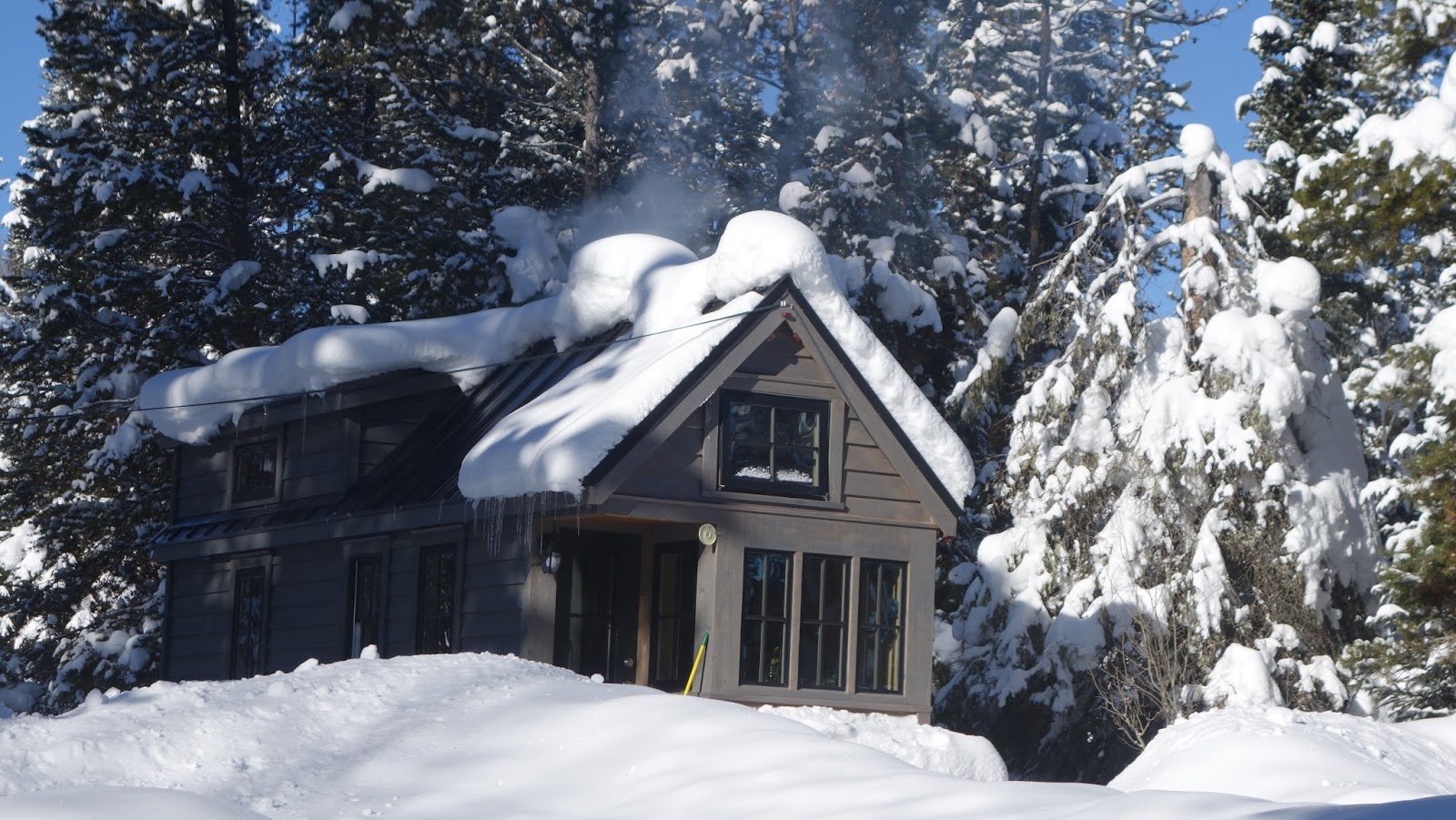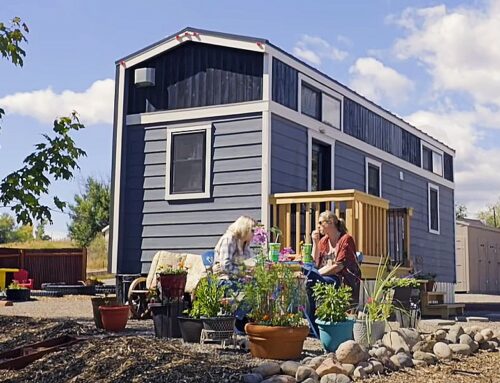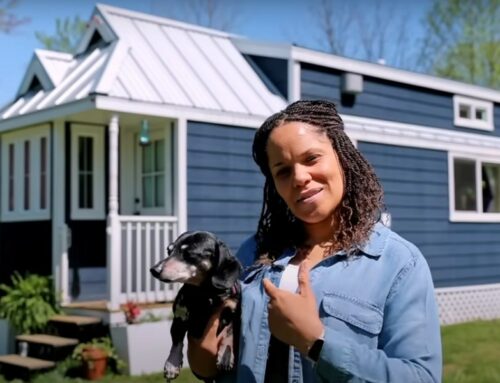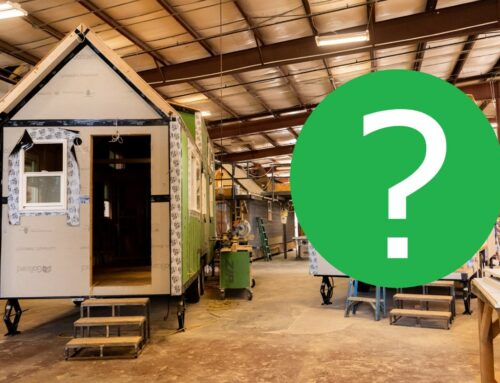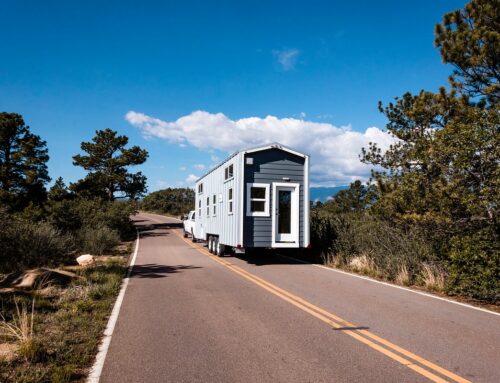Photo credit: Ariel of “Fy Nyth Tiny House.” Off-grid Tumbleweed in Wyoming.
Hi! I’m Jenna Spesard from Tiny House Giant Journey. Currently my Tiny is parked at Mt. Hood Tiny House Village in Welches, Oregon. The climate this winter has been humid with temperatures dropping as low as of 10°F (which is abnormally cold). So far I’ve been keeping warm thanks to my winter prep, which I began back in September. In the video below, I explain my winterizing process.
Tiny House RV Winterizing: Things to Consider
- Your Appliances. Propane appliances require extra help to prevent them from freezing. For example, I added a propane heat blanket to my tank. This helps me receive the proper amount of propane pressure in winter. It’s also great to have appliances that will automatically heat up and protect themselves from freezing. My water heater does this, and I love it. Keep in mind that some appliances are not meant for winter living. Research before installing.
- Keep the Interior Warm. It’s important to make sure the inside of your Tumbleweed doesn’t freeze. I like to keep my tiny at 70° when I’m using it, and 50-55° when I’m out of town. If you plan on leaving for a long time, you can shut off and drain your appliances for hibernation. Some appliances may require anti-freeze.
Wintering in a Tiny House RV is cozy, when you’re prepared!
- Humidity. It is especially important to protect your tiny from moisture problems during the winter months. Purchase a dehumidifier to help reduce humidity and/or keep a window cracked. If you find that there is a lot of condensation on your windows, wipe the excess moisture away when necessary.
- Carbon Monoxide Detector. Air quality can be significantly reduced in winter because of the lack of airflow (the windows are most likely closed). Don’t forget to keep your carbon monoxide detector charged. You can also get an air quality monitor. I use the Awair.
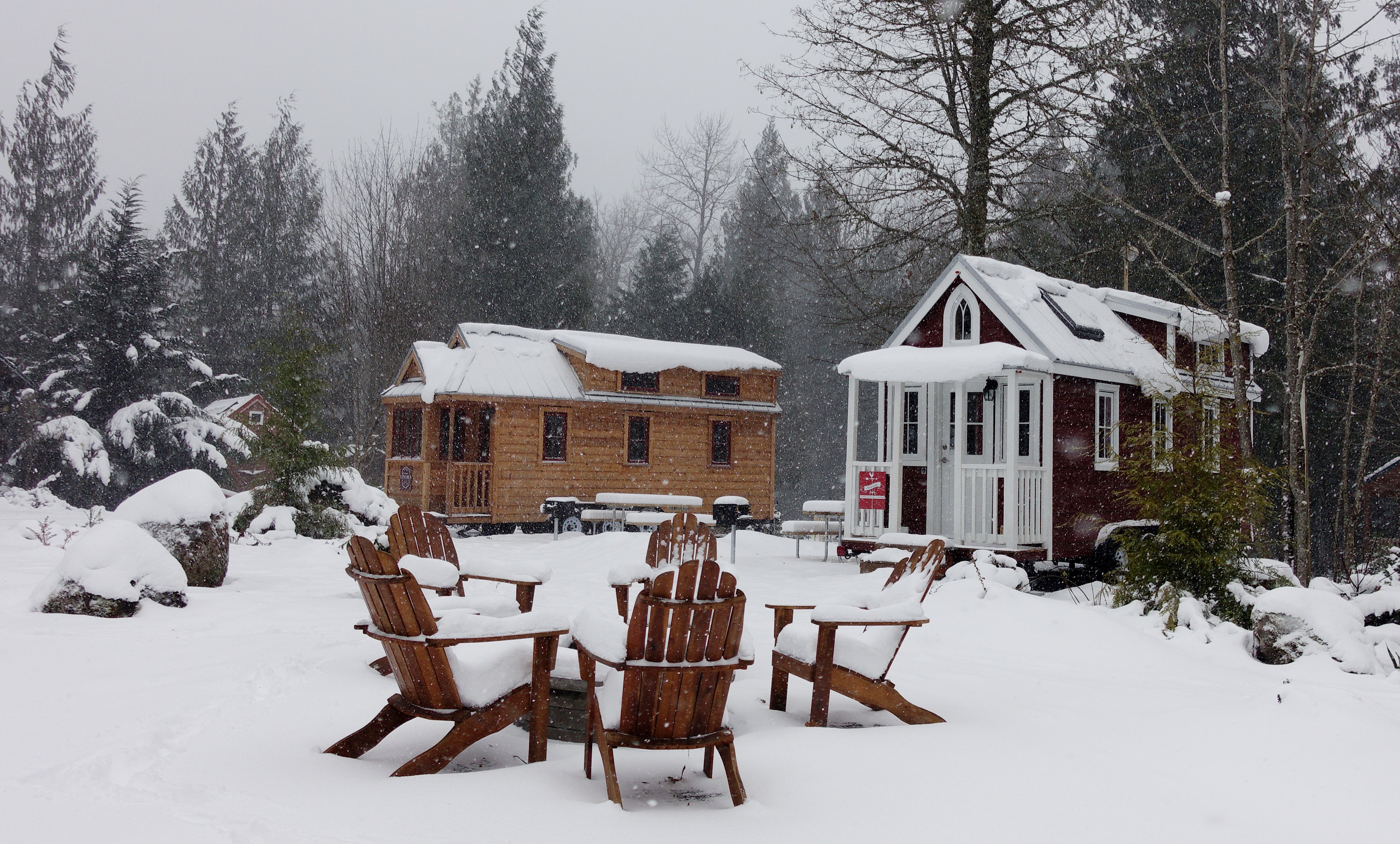
- Off-grid winterizing. If you are parked in an off-grid location, you will need to do a few extra steps before winter rolls in. For example, your solar power may not be enough if your climate includes overcast skies. It is a good idea to purchase a gas generator for cloudy days. You will also need to direct your grey water disposal correctly. Try digging a french drain (in areas where it is allowed) below the frost line in early fall. For more off-grid tips, check out Ariel’s blog.



